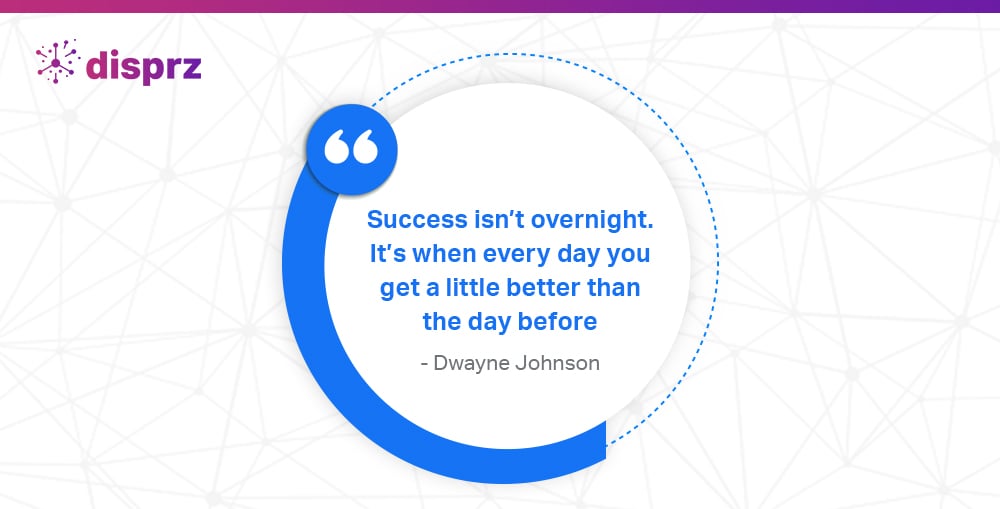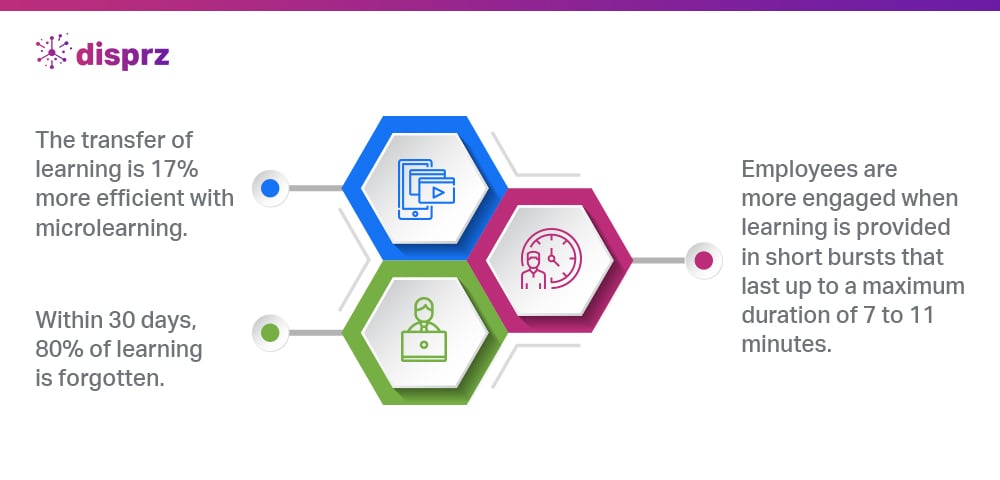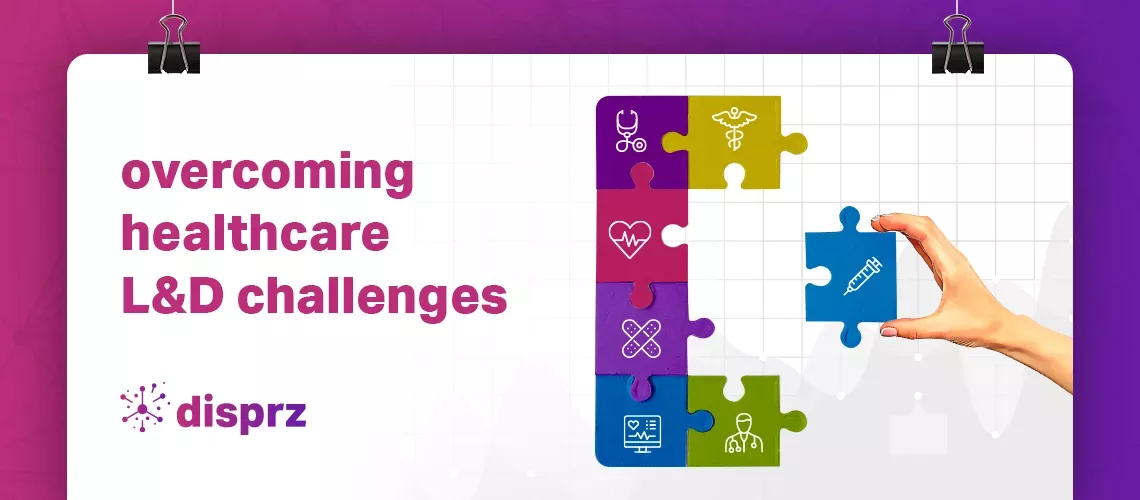-
eBookEmployee Upskilling - A Detailed Blueprint For Building A Skills-Driven Learning Culture
Healthcare has always been a challenging industry, but the pressure has dramatically increased post-pandemic. Covid-19 intensified the mental, physical and emotional strain on healthcare employees who were already reporting burnout pre-pandemic.
Moreover, rapidly changing Government regulations, shifts in patient expectations, and the healthcare industry’s digital disruption have taken a toll on employee performance. Incremental advances across connected drug delivery, changing payment models, rising telehealth and new medical technologies require new skills to improve patient engagement and adherence levels.
The changing dynamics in the healthcare industry are affecting employees’ performance. The quality of care offered by hospitals and health care organizations is hampered. This can lead to adverse outcomes in terms of patient mortality and complications. Gaps in L&D can affect the healthcare workers’ performance. This can impact the organization’s reputation and put patients at risk. Hence the L&D professional need to walk an extra mile to make learning more relevant, engaging, and result-driven for empowering the healthcare professionals.

L&D challenges in healthcare and how to fix it
Robust learning and development can help boost performance and even decrease the attrition rate in the healthcare industry. We cannot deny that skilling a healthcare professional isn’t a walk in the park. It is surely a challenging task but not an impossible one.
Let’s look at some L&D gaps/challenges and ways to fix them.
Evolving roles in healthcare and lack of skill development
Roles and responsibilities are evolving at a fast pace in the healthcare-industry post-covid. Mere compliance training won’t suffice. Healthcare professionals need continuous upskilling and reskilling opportunities to address current challenges and become future-ready for responding to unexpected medical crises. Moreover, you never know what kind of advanced technology the hospital might have to accommodate. So, healthcare professionals need to be agile enough to manage unforeseen circumstances and adapt to new technology quickly.
How to fix it – Commence by finding the skills needed for each role. Modern learning tools like disprz helps in role-based skilling. You can discover and benchmark the trending leadership, functional, digital & meta-skills for each role. Once you know which skills are needed for a specific role, you can delve deep into individual skill gaps and create learning pathways for each employee to upskill them.
Time crunch resulting into low adoption
Healthcare is a time-pressed industry. Whether it is a doctor, nurse, respiratory therapist, cardiovascular technologist, or a pharmaceutical sales representative, everyone has a lot on their plate, and so they find it challenging to invest time in learning and development. Hence the adoption of the courses is very low in the healthcare industry. Improving skillsets is crucial to offer optimum services in the healthcare industry. Healthcare professionals need to upgrade their knowledge constantly to comply with the changing regulations in the medical field.
How to fix it – Microlearning is a smart learning strategy to manage the time-crunch issue of health care professionals. The knowledge bytes can fit right into the healthcare employee’s flow of work by breaking long content into digestible pieces. Through short video or short content on the smartphone, the employees can learn at their convenient time. Microlearning helps combat the forgetting curve as healthcare employees quickly reinforce what they’ve learned.

One of India’s leading pharmacy retail chains kept employees up-to-date on – how to stock up medicine and prescribe the right drug using microlearning. This helped them improve the course completion rate and boost productivity across the stores.
Click here to read the full case study on how the pharmacy retail chain amplified productivity using microlearning.
Low engagement and high attrition in healthcare
This industry has sky-high attrition; most hospitals and healthcare organizations are facing a shortage of workforce. The demand for healthcare professionals is increasing rapidly.
Employment in the healthcare field is projected to grow 16% over the next decade. Health care will add about 2.6 million new jobs to the economy.
With the high demand, hiring a health care professional is a challenging task. Therefore it is crucial to retain the talents by providing upskilling and reskilling opportunities for career advancement. The organization needs to ensure that the L&D opportunities they provide are effective and impactful; otherwise, employees won’t engage with it, which will result in wastage of time, money, and resource.
How to fix it – Through personalization and gamification, you can make the learning sessions engaging and interactive. Using an AI-powered Learning Experience Platform(LXP), you can personalize learning for healthcare professionals. The AI will provide relevant recommendations based on the employees’ job roles and learning behaviour. Moreover, you can use gaming elements to make the learning sessions more interesting. For instance, in disprz Gameinar, you can create polls on various medical procedures/policies or quizzes about different medications/ patient safety. Healthcare employees can discuss quality improvements or new technologies and methodologies through breakout rooms. Moreover, through sticky notes, they can provide feedback on the learning session to improve L&D and make it more effective.
Changing healthcare policies and no platform to disseminate information
Healthcare policies, safety regulations, and treatment protocols are constantly changing. So the frontline workers in the healthcare industry need to stay abreast of these changes. Therefore a common platform is essential to disseminate critical information in real-time and keep all the employees on the same page.
How to fix it – Social learning is a great way to boost collaborative productivity and keep employees up-to-date about changing healthcare protocols, policies and regulations. On a social platform like Buzz in disprz, the L&D team can instantly post the latest updates and keep everyone updated. Moreover, employees can share helpful information and resources to learn from each other.
Conclusion
The shortage of skilled professionals is fueling the complication and mortality rate in the healthcare industry. The L&D team needs to rethink its learning and upskilling strategies to improve employee performance and productivity. Explore new strategies and technologies to take your learning and development to the next level. A complete skilling suite like disprz can be your helping hand in strengthening your employee learning and upskilling. Blending technology with cognitive science principles, disprz creates impactful and engaging learning pathways for the employees at all levels. It helps identify the right skills needed for different healthcare job roles and assesses the current levels, drives hyper-personalized learning, and makes available insightful analytics that links back skilling to the organization’s performance. See a Preview to experience disprz in action.

About the author

Debashree Patnaik
Debashree is a seasoned content strategist at Disprz.ai, specializing in enterprise learning and skilling. With diverse experience in B2B and B2C sectors, including ed tech, she leads the creation of our Purple papers, driving thought leadership. Her focus on generative AI, skilling, and learning reflects her commitment to innovation. With over 6 years of content management expertise, Debashree holds a degree in Aeronautical Engineering and seamlessly combines technical knowledge with compelling storytelling to inspire change and drive engagement.
More Resources
4 min read
• 15 Apr 2024
Unlocking the Power of Managerial Engagement in Talent Development
4 min read
• 09 Apr 2024
Nurturing Excellence in Building Leadership Pipelines
Sign up to get free resources and stay up to date with Disprz!
Discover how Disprz can align learning and upskilling with your desired business outcomes.






